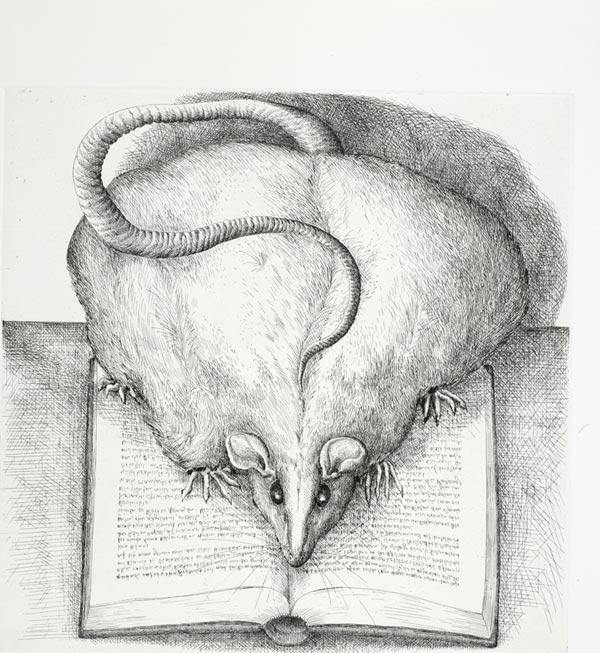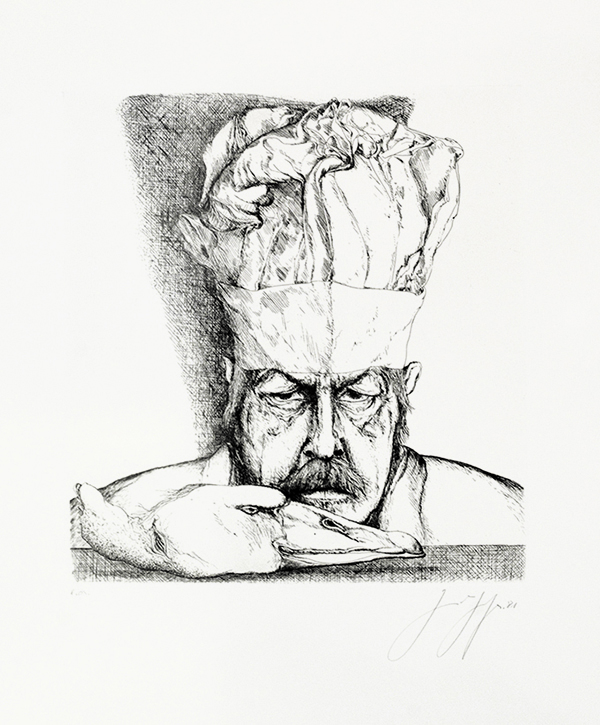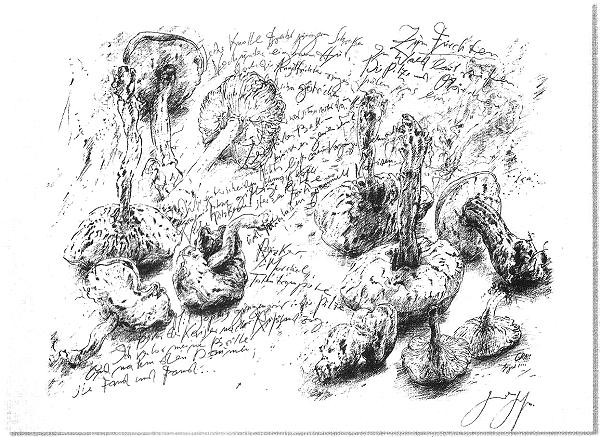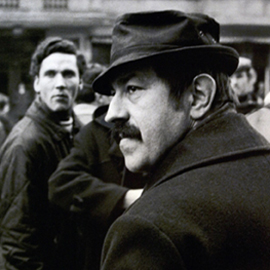
Günter Grass was born into a merchant family in 1927 in Danzig. He died in 2015 in Lübeck.
Already from the start of his artistic career, the Literature Nobel Prize winner and best-known post-war German author not only wrote, but also worked as a sculptor, painter and graphic artist. Grass availed of these differing artistic forms of expression both independently from each other, as well as in combination. With him creating etchings and ink drawings to many of his literary texts, and designing book covers. Moreover, he even produced his own lithography portfolios, painted watercolours and created sculptures.
Since 1972 Günter Grass was a member of Berliner Malerpoeten - Berlin Painter-Poets, 14 writers who also painted and painters who also wrote. The group was founded by Lithuaninan born German poet Aldona Gustas in West Berlin in 1972. Six of his inkdrawings are part of the exhibition Oxymora, Berlin Painterpoets and contemprary Lithuanian artists, on display at Leipziger Baumwollspinnerei Feb. 25. - March 25., 2017.
Günter Grass was born into a merchant family in 1927 in Danzig. He died in 2015 in Lübeck.
Already from the start of his artistic career, the Literature Nobel Prize winner and best-known post-war German author not only wrote, but also worked as a sculptor, painter and graphic artist. Grass availed of these differing artistic forms of expression both independently from each other, as well as in combination. With him creating etchings and ink drawings to many of his literary texts, and designing book covers. Moreover, he even produced his own lithography portfolios, painted watercolours and created sculptures.
Grass began his artistic career as a sculptor. From 1948 to '52 he studied at the Düsseldorf Art Academy under Sepp Mages und Otto Pankok. Then from 1953 to '56 after moving to Berlin, he became a student under the sculptor Karl Hartung at the Academy of Fine Arts. His first exhibition of sculptures and graphic works was held in Stuttgart in 1955. He has begun to write by then as well, with his first novel Die Vorzüge der Windhühner consisting of poems and graphic works being released in 1956. He moved temporarily to Paris in 1957, where he also got to know the painter Karl Oppermann. In 1959, his novel Die Blechtrommel was published, which would go on to become a classic of the 20th century and make Grass famous worldwide.
In 1960, he returned to Berlin and published the volume of poetry Gleisdreieck, which had nun drawings in it among others, and which were also exhibited in the zinke gallery a short time later. Grass read his poems in the zinke gallery on occasion and over the coming years he got to know and appreciate several of the poets in the "Kreuzberg Bohemians" circle, some of who would subsequently become members of the Berliner Malerpoeten (Berlin Painter-Poets). Grass was connected by a unique friendship with Aldona Gustas especially. From 1972, Günter Grass was a member of the Berlin Painter-Poets group.
Not only was Grass an author and artist, he was also a political intellectual who became involved in numerous debates about society and, together with Böll and other post-war authors, publicly addressed the historic responsibility the Germans had after the Holocaust – and that on an international stage as well. In 1961, he supported Willy Brandt in the SPD social democratic party during their election campaign and maintained a link with the party over the decades to come.
Günter Grass worked consistently on his artistic oeuvre over the following years, with his literary works gaining him fame globally. These comprised novels and stories, including Katz und Maus (1961), Hundejahre (1963), Aus dem Tagebuch einer Schnecke (1972), Der Butt (1977), Das Treffen in Telgte (1979), Ein weites Feld(1995), Die Rättin (1986), Im Krebsgang (2002)and Beim Häuten der Zwiebel (2006).
He continued working on his last novel Vonne Endlichkait until just before his death. It consists of double pieces (of short stories and poems combined with pencil drawings) and was released by the Steidl publishing house in 2015.
Grass' artistic works have been exhibited widely both in Germany and internationally.
In 2002, the Günter Grass-House in Lübeck was opened, intended as a forum for literature and the visual arts, and which is responsible for his artistic estate together with the Günter and Ute Grass Foundation.
On the occasion of the 50th anniversary of the first publication of Hundejahre, Grass created a series of etching in 2013 for an illustrated anniversary edition, which were exhibited in the Günter Grass House in 2013 and at Browse Gallery Berlin in January 2015 – the last solo exhibition before Grass' death in April the same year.
Browse Gallery has exhibited Grass' drawings in several group exhibitions of Berliner Malerpoeten - Berlin painter-Poets and also as part of the zinke exhibition.
AWARDS (SELECTION)
1959 Bremer Literaturpreis which was conferred on him by the jury, but which the ruling Bremen
Senate refused to award
1996 Grass received the Sonning Prize, the highest such distinction in Denmark
Hans-Fallada-Preis der Stadt Neumünster
Thomas-Mann-Preis der Hansestadt Lübeck
1999 Nobel Prize in Literature
"Premio Principe de Asturias" Literature Prize in Oviedo


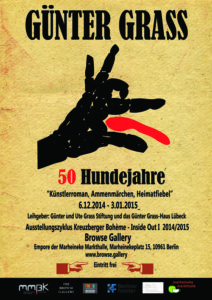

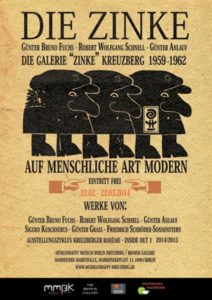
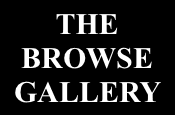
 Deutsch
Deutsch  English
English 